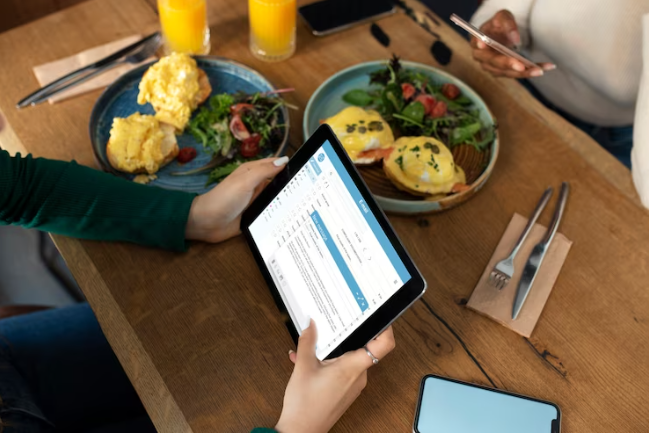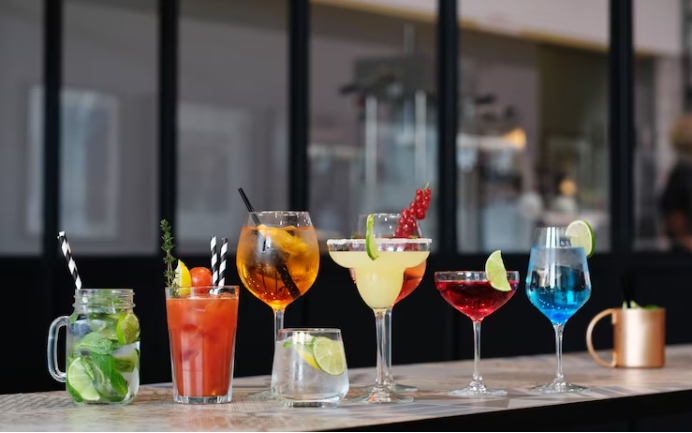Are you looking for ways to increase revenue at your restaurant? One effective strategy is to focus on upselling and cross-selling. Upselling involves encouraging customers to purchase a higher-priced item or add-on, while cross-selling involves suggesting complementary items that pair well with what the customer has already ordered.
By implementing these strategies, you can not only increase sales but also enhance the dining experience for your customers.
To effectively upsell and cross-sell, you need to identify opportunities and create a compelling sales pitch. This article will provide you with tips and strategies on how to effectively upsell and cross-sell at your restaurant.
From identifying opportunities to measuring and analyzing sales data, you’ll learn how to optimize your restaurant’s sales and improve customer satisfaction.
So, let’s dive in and explore the world of upselling and cross-selling in the restaurant industry.

Understanding the Difference Between Upselling and Cross-Selling
Let’s break it down: upselling is like offering a customer an extra scoop of ice cream on top of their already delicious sundae, while cross-selling is like suggesting they add a warm, gooey brownie to their order.
In other words, upselling is when you offer customers an upgrade or add-on to their current purchase, while cross-selling is when you suggest complementary items to go with their purchase.
Examples of upselling include offering a larger size or premium version of the product they’re already purchasing. Cross-selling can include suggesting a side dish or drink to go with their meal.
Incorporating both upselling and cross-selling into your sales strategy can benefit your restaurant by increasing revenue per customer and improving customer satisfaction. By providing customers with additional options and personalized recommendations, you can enhance their dining experience and encourage them to return in the future.
Identifying Opportunities for Upselling and Cross-Selling
Spotting chances to suggest additional items or upgrades to diners can enhance their experience and increase revenue for the establishment. One way to identify these opportunities is through menu analysis.
Take a close look at your menu and identify items that can easily be paired with other dishes or beverages. For example, if a customer orders a burger, suggest adding fries or a drink to make it a meal. If someone orders a salad, recommend adding grilled chicken or shrimp for added protein. By strategically pairing items, you can increase the total bill and provide a more satisfying dining experience for your customers.
Another way to identify upselling and cross-selling opportunities is through staff training. Train your servers to upsell by teaching them how to suggest additional items in a natural and non-pushy way. Encourage them to be knowledgeable about the menu and make recommendations based on a customer’s preferences.
Additionally, consider implementing a commission or incentive program for servers who successfully upsell or cross-sell. By investing in staff training and incentivizing upselling, you can create a culture of successful salesmanship and ultimately increase revenue for your restaurant.
Creating an Effective Sales Pitch
You can easily increase your sales and leave a lasting impression on your customers by crafting a personalized and persuasive sales pitch that caters to their unique preferences and needs. To do this, it’s important to start by developing rapport with your customers.
This involves taking the time to get to know your customers and their preferences, as well as showing genuine interest in their dining experience. By demonstrating that you care about their satisfaction, you’ll build trust and make them more receptive to your suggestions.
In addition to developing rapport, having thorough product knowledge is essential to crafting an effective sales pitch. Take the time to familiarize yourself with your menu and the ingredients in each dish, as well as any specials or promotions that are currently being offered.
This will allow you to make informed recommendations and answer any questions your customers may have. When presenting your recommendations, be sure to use persuasive language and highlight the unique benefits of each item. And don’t forget to prepare for objections – be ready to address any concerns your customers may have and use closing techniques to seal the deal.
With a little preparation and practice, you can create a sales pitch that will help you boost sales and enhance your customers’ dining experience.
Providing Excellent Customer Service
To truly stand out in the hospitality industry, it’s crucial to prioritize providing exceptional customer service. One of the best ways to provide excellent customer service is by building rapport with your customers.
This can be achieved by greeting them warmly as soon as they arrive and engaging in friendly conversation throughout their visit. Make an effort to remember their names and any specific preferences they may have, such as their favorite dish or drink. This will make them feel valued and appreciated, leading to a positive experience that they’re more likely to remember and recommend to others.
Another important aspect of providing excellent customer service is anticipating the needs of your customers. This means being attentive to their body language and verbal cues to identify any potential issues before they become problems.
For example, if a customer seems hesitant about a menu item, offer suggestions or alternatives that may better suit their taste. Additionally, be proactive in checking in with customers during their meal to ensure they’re satisfied with their experience. By demonstrating a genuine interest in their satisfaction, you can build trust and loyalty, leading to repeat business and positive word-of-mouth recommendations.
Measuring and Analyzing Sales Data for Continued Improvement
Measuring and analyzing sales data helps hospitality businesses improve their operations and identify areas for growth. By utilizing data analysis techniques, restaurants can gain valuable insights into their customers’ behaviors and preferences, as well as the effectiveness of their upselling and cross-selling strategies.
This information can then be used to optimize sales performance and maximize revenue. One way to measure sales data is through the use of a point-of-sale (POS) system. This system can track sales data in real-time, making it easy to identify trends and make adjustments as needed.
Additionally, customer feedback can be collected through surveys or social media, providing further insight into areas for improvement. By continually analyzing sales data and making strategic changes, restaurants can stay ahead of the competition and provide a better overall experience for their customers.
Here is the effective restaurant’s menu description.
Frequently Asked Questions
How can restaurant staff effectively handle customer objections to upselling or cross-selling?
When handling objections to upselling or cross-selling, effective communication is key. Listen to the customer’s concerns and provide solutions that address their needs. Use positive language and avoid being pushy or aggressive.
What are some common mistakes that restaurants make when attempting to upsell or cross-sell?
Common mistakes when upselling or cross-selling include pushiness, lack of knowledge, and not understanding customer needs. Overcoming objections requires active listening and offering personalized suggestions.
Are there certain types of menu items that are more effective for upselling or cross-selling than others?
Menu psychology suggests that certain items are more effective for upselling/cross-selling. Timing strategies also play a role, such as offering add-ons after the main order is taken. Experiment to find what works best for your restaurant.
How can restaurants ensure that their staff are properly trained and equipped to upsell and cross-sell?
To properly train and equip your staff for upselling and cross-selling, use effective training techniques such as role-playing and menu tastings. Measure their performance with metrics like average check size and customer satisfaction to ensure success.
Is there a point at which too much upselling or cross-selling can have a negative impact on the customer experience? If so, how can restaurants find the right balance?
Finding the balance between upselling and cross-selling while maintaining customer satisfaction is crucial. Too much of either can lead to a negative experience. Listen to your customers, understand their needs and preferences, and offer additional items accordingly.
Conclusion
Congratulations! You’ve just learned some effective strategies for upselling and cross-selling in your restaurant.
By understanding the difference between these two techniques, you can identify the best opportunities to increase your sales.
Creating an effective sales pitch is also crucial, as it can entice customers to try new items or upgrade their orders.
Providing excellent customer service is key to successful upselling and cross-selling. By making your customers feel valued and appreciated, they’ll be more likely to trust your recommendations.
Don’t forget to measure and analyze your sales data to see what’s working and what’s not.
With these strategies in mind, you can boost your revenue and create a positive customer experience.
Good luck!



